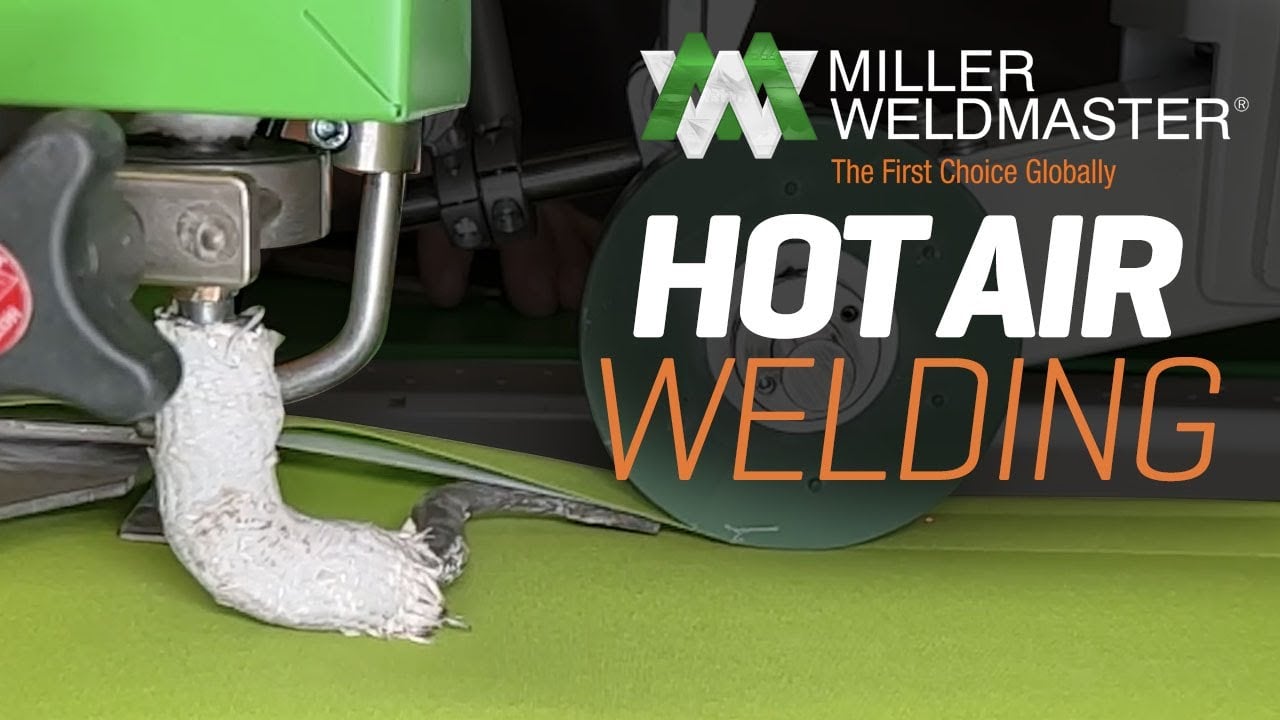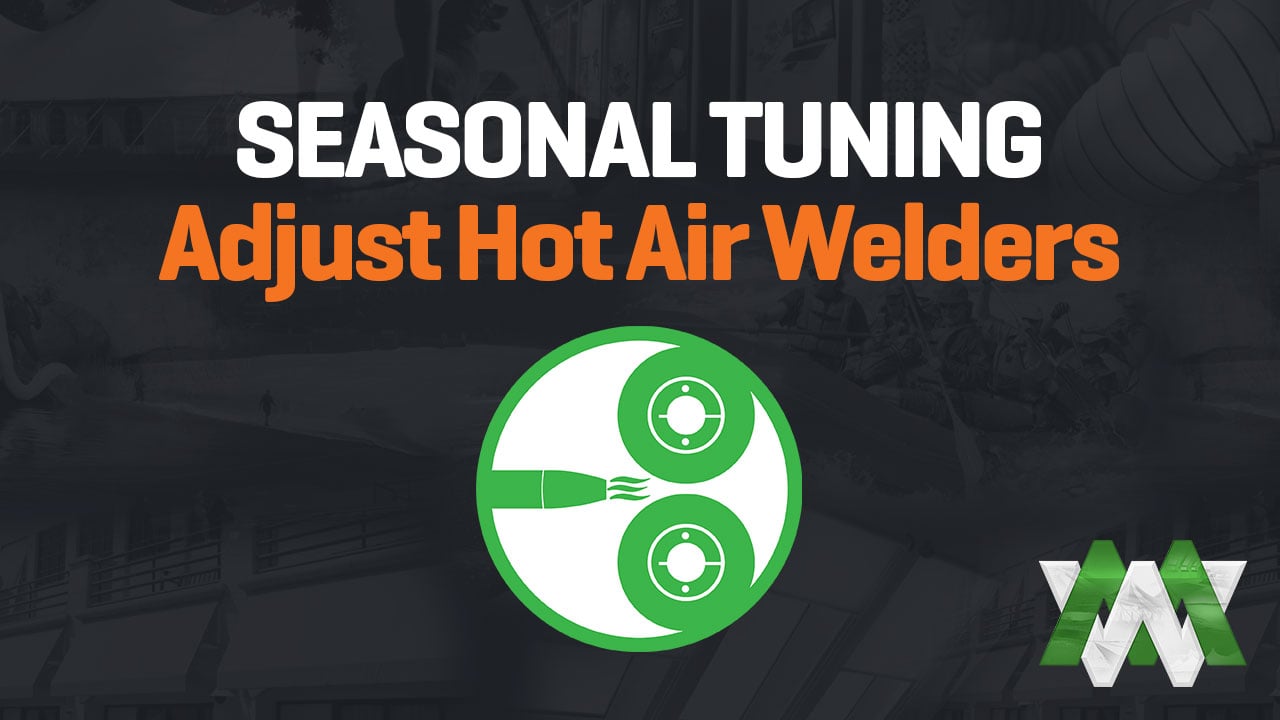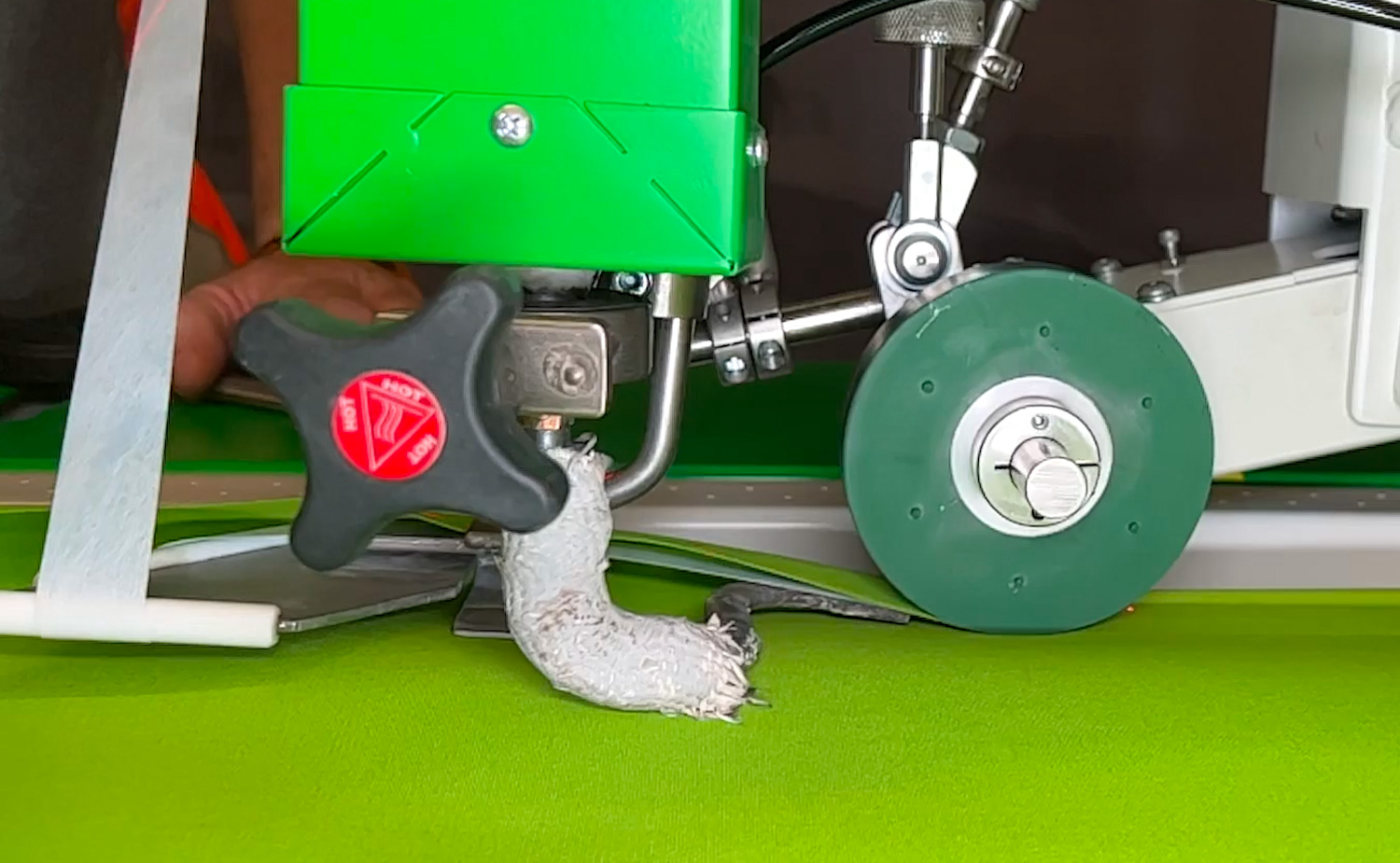Clean nozzles are the foundation of strong, reliable seams. Yet, cleaning hot air welding nozzles is one of the most overlooked maintenance tasks in many production environments. It is important to regularly clean your nozzles to ensure optimal welding performance. Over time, even small amounts of buildup can restrict airflow, cause uneven heating, and weaken weld quality—leading to costly rework or downtime.
At Miller Weldmaster, we’ve spent decades perfecting hot air welding technology built for durability and long-lasting performance. But even the best machines rely on consistent care to deliver top results, and welders have the ability to operate efficiently only when nozzles are properly maintained. Learn how to maintain your nozzles properly and keep your seams airtight and consistent, as regular cleaning can extend the life of your equipment and properly maintained nozzles are key to consistent seams.
Explore Hot Air Welding Technology
Why Clean Nozzles Are the Secret to Stronger Welds
Your welder’s nozzle is where precision begins. A clean nozzle ensures proper airflow, heat distribution, and material bonding, resulting in stronger, more uniform seams. When dirt, debris, or melted residue accumulates, the airflow becomes irregular, creating cold spots or overheating that can distort the material. Buildup can lead to problems such as airflow restriction and uneven seams, and using the wrong nozzle can cause additional problems, including heat buildup and equipment damage.
Think of it this way: clean airflow equals clean welds. Keeping the nozzle free from buildup not only improves seam quality but also extends the life of the equipment itself. Regular cleaning can eliminate the need for costly repairs or replacements.
Learn more about how hot air functions in welding in our Hot Air Glossary
For best results, always review the manufacturer's cleaning guidelines before starting maintenance.
Common Causes of Nozzle Buildup in Hot Air Welders
Even the most controlled environments deal with nozzle buildup. Moisture in the environment, such as humidity or improper storage, can contribute to nozzle buildup and negatively affect weld quality. Common culprits include:
| Material Type | Common Buildup | Impact on Weld Quality |
|---|---|---|
| Vinyl and PVC | Melted residue, plastic particles | Uneven seams, scorched edges |
| Tarpaulin fabrics | Adhesive and coating buildup | Airflow restriction, weaker bonds |
| Technical textiles | Dust, thread fibers, film residue | Inconsistent welds, poor adhesion |
| Reinforced fabrics | Frayed threads, melted polymer | Irregular heat flow, seam leaks |
Note: Proper cleaning is especially important in auto body work to maintain the integrity and appearance of body panels. Store nozzles in their original packaging or in a dedicated storage box to prevent them from getting dented or scratched.
Different materials release debris at varying temperatures, so it’s essential to adapt cleaning frequency based on your production type and intensity, and to ensure the nozzle is suitable for the specific work or application.
Step-by-Step Guide: Cleaning Hot Air Welding Nozzles Safely
Follow these simple steps to remove buildup and restore nozzle performance safely:
-
Power Down and Cool Down: Always shut off and allow the machine to cool before cleaning. Allow the heating element to be gradually cooled to prevent damage.
-
Wear Protective Gear: Use protective gloves and safety glasses for safety.
-
Remove Surface Debris: Wipe away visible residue with a lint-free cloth.
-
Use Proper Cleaning Tools: Gently scrape using a soft tool, such as a soft brass brush, or apply an approved cleaning solvent. Avoid sharp objects or abrasive materials that can damage the nozzle surface. Silicone can be used to help remove stubborn blockages. For certain types of debris, water can be used as a cleaning medium, but ensure the nozzle is completely dry before reinstallation. After cleaning, make sure the nozzle is thoroughly cleaned and free of residue.
- Compressed Air Cleaning: Use compressed air to remove dust and debris from the nozzle and internal components.
-
Inspect for Damage: Look for cracks, bends, thinning metal, or signs of wear on the heating element that may affect airflow.
-
Reinstall and Test: Reattach the nozzle securely, check and adjust pressure settings as needed, run a short test weld, and confirm even heating. Allow nozzles to dry completely before reassembling them to prevent mold or mildew from forming. Proper cleaning and maintenance can reduce the need for repair.
Tip: Store the nozzle and plastic welder in a protective case in a dry environment when not in use to safeguard against damage and environmental factors. A small amount of anti-spatter gel can prevent melted plastic from sticking to the exterior of the nozzle.
For more detailed maintenance and cleaning recommendations, check out our Hot Air Welding Machines Guide
Maintenance Tips: Clean filters regularly to maintain optimal airflow and prevent blockages. For older machines, consider using oct (electro-contact cleaner) to clean the insides and restore performance.
Pro Tips to Keep Nozzles Cleaner for Longer
Keep your nozzles in top condition with these operator-tested tips:
-
Pre-clean materials to remove dust or coating residue before welding.
-
Regularly inspect nozzles between shifts for early signs of buildup.
-
Use proper temperature settings for your material to reduce scorching.
-
Avoid using unapproved solvents or tools that may damage the nozzle.
-
Document cleaning schedules as part of your preventive maintenance plan.
- Regular cleaning prevents the buildup of melted plastic and debris, helping to extend nozzle life and maintain optimal performance.
Clean habits go a long way—operators who follow a consistent cleaning routine often report longer nozzle life, fewer problems, and extended equipment lifespan. A properly maintained nozzle not only reduces the risk of operational issues but also ensures your hot-air plastic welder continues to perform efficiently.
When Cleaning Isn’t Enough: Knowing When to Replace Nozzles
Even the most careful maintenance can’t prevent natural wear over time. Replace your nozzle if you notice:
-
Persistent clogging even after thorough cleaning, as this can lead to more serious problems such as airflow restriction, temperature fluctuations, or even component burnouts
-
Distorted or uneven heat output
-
Thinning metal or bent tips
-
Seams that continue to underperform despite other adjustments
Problems like these may also arise if you are using the wrong nozzle for your application. Using the wrong nozzle can lead to equipment damage and may require repair or replacement to restore proper function.
Sometimes, nozzle wear can also indicate that you’re using a machine not ideally matched to your material type. Learn how to make the right equipment choice in our guide on How to Choose a Hot Air Welder.
Partnering with Miller Weldmaster to Keep Welds Strong
At Miller Weldmaster, we’re here to help you get the most from your equipment—long after installation. Whether you need cleaning guidance, replacement parts, or expert advice on maintenance, our service and support team is ready to assist.
If you’re unsure whether your nozzle needs cleaning or replacement, contact our team for personalized recommendations.
Visit Our Service & Support Center
Frequently Asked Questions About Hot Air Welding Nozzle Cleaning
How often should I clean hot air welding nozzles?
Inspect and clean your nozzles at the end of every shift or whenever you notice residue buildup. High-volume operations may require more frequent attention. Operators should perform a test run and practice adjustments to confirm that temperature and speed settings are correct for the material requirements.
What tools should I use to clean welding nozzles?
Use soft brushes, lint-free cloths, and approved solvents. For stubborn debris, gently scrape with a soft tool—never use metal scrapers or sharp objects that can damage the nozzle surface. You can also use compressed air to blow out dust and obstructions from filters and nozzles. If blockages persist, apply a small amount of silicone to help loosen residue. When appropriate, rinse parts with water to remove remaining debris and ensure optimal performance. Use appropriate brushes for your nozzle material to prevent cross-contamination.
Can dirty nozzles affect seam strength?
Absolutely. Dirt and residue disrupt airflow and heat balance, which can lead to problems such as uneven seams, weak bonds, or even component damage. Using the wrong nozzle can further restrict airflow and lead to additional issues, compromising weld quality and causing more problems during operation.
Should I replace a nozzle if cleaning doesn’t fix seam issues?
Yes—if buildup persists or the nozzle is visibly damaged, replacement is safer and more efficient than repeated cleaning. In some cases, minor issues with nozzles can be addressed through repair, such as careful cleaning or reshaping, but if these repair methods do not restore proper function, replacing the nozzle is usually the best option to ensure reliable welds and maintain the durability of your hot air welder.
What’s the best way to prevent nozzle buildup?
Regular maintenance, correct temperature settings, and clean materials are the best defenses against buildup. Regular cleaning prevents the accumulation of melted plastic, debris, and obstructions on nozzles and filters, which can impair equipment performance. It is essential to clean filters regularly to ensure optimal airflow and prevent blockages. Keeping your equipment properly maintained through consistent servicing and care is key to smooth operation and maximizing its lifespan. Consistency is key to keeping your machine running smoothly.





